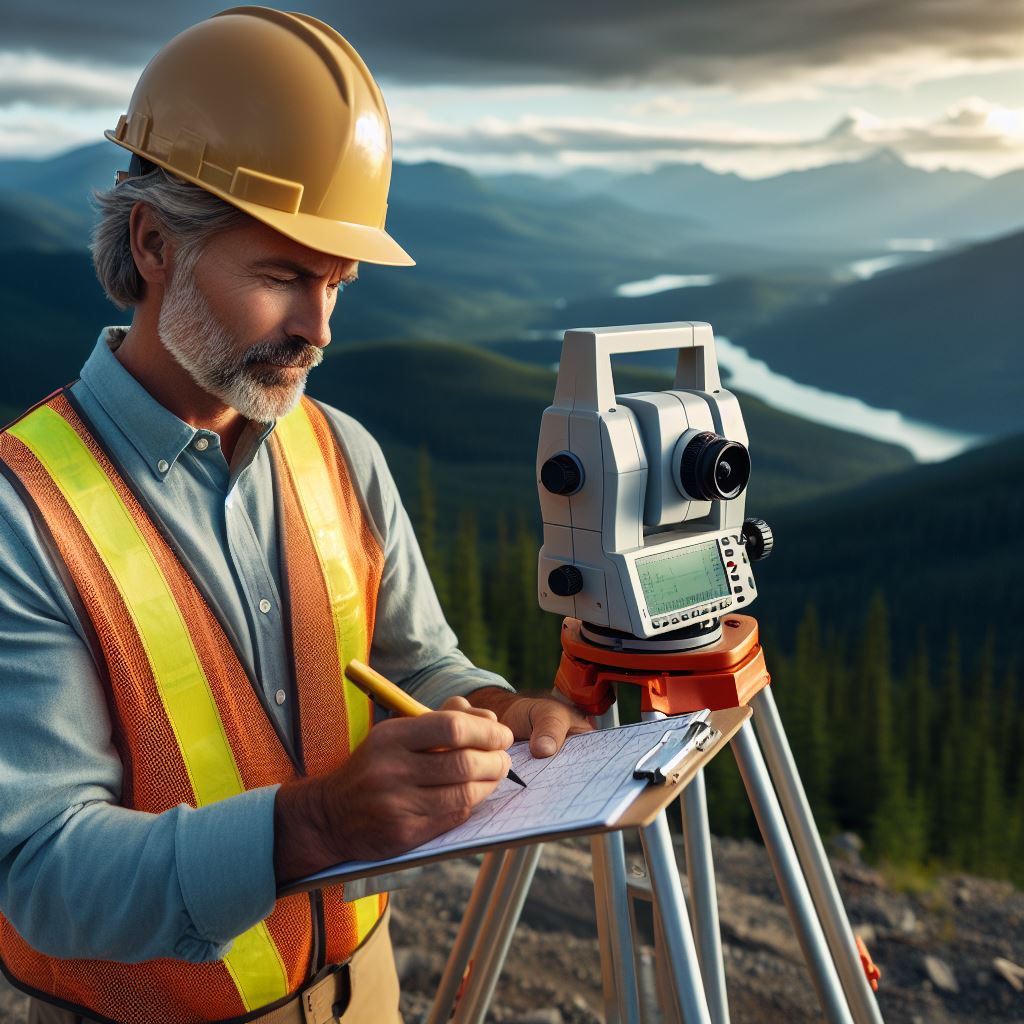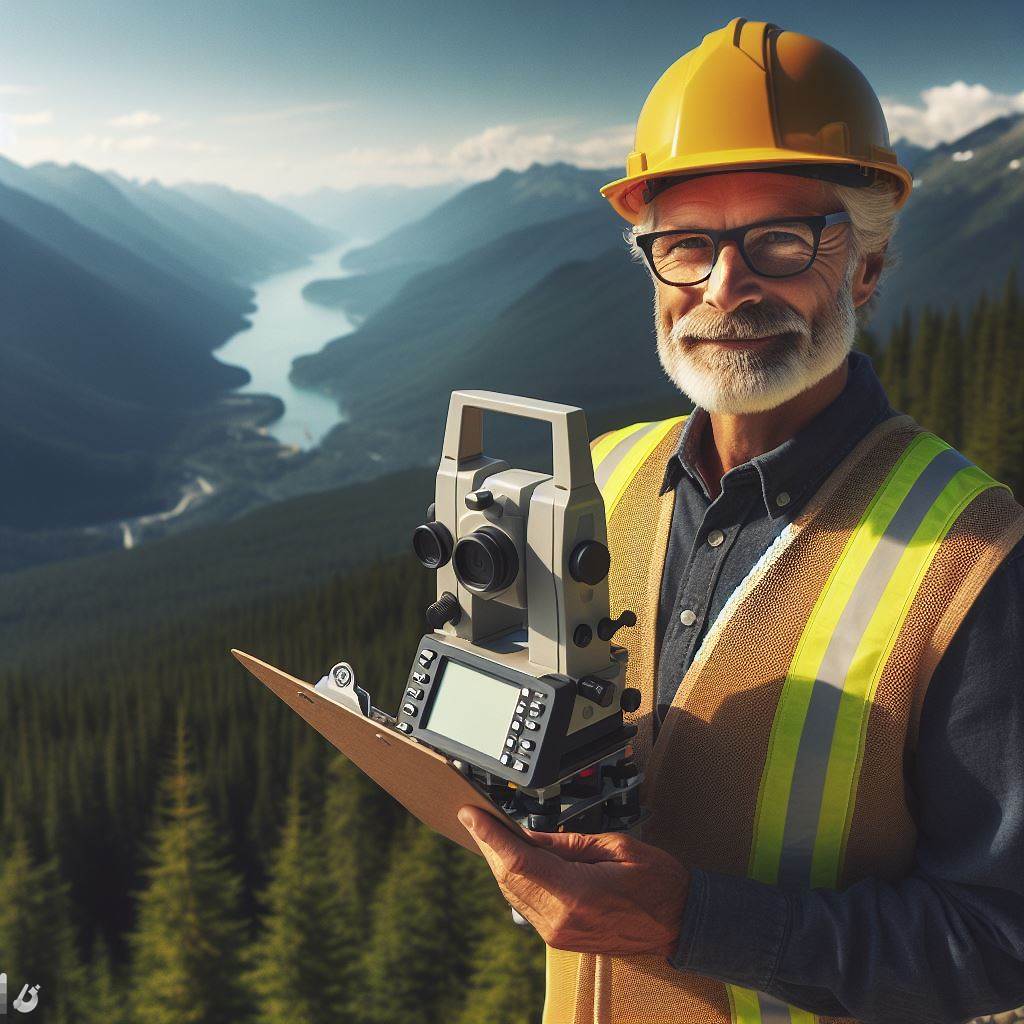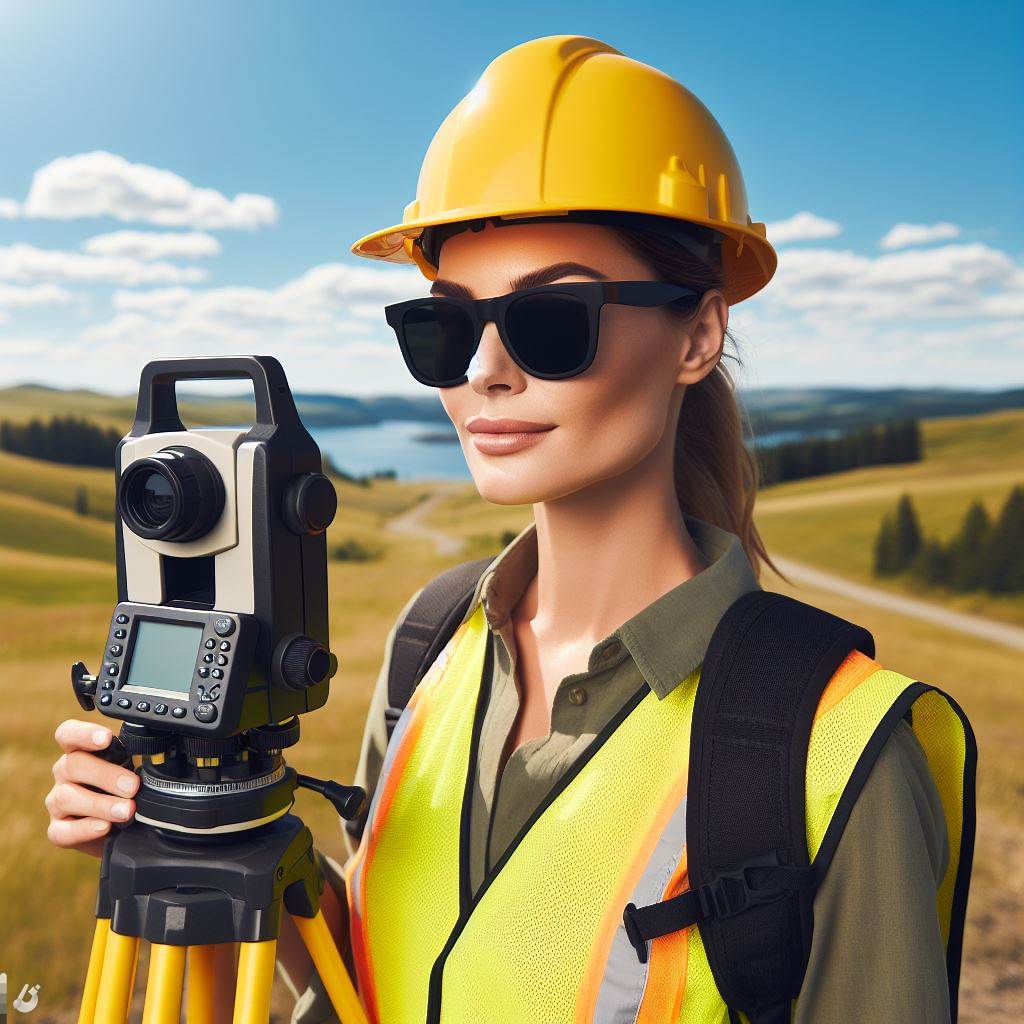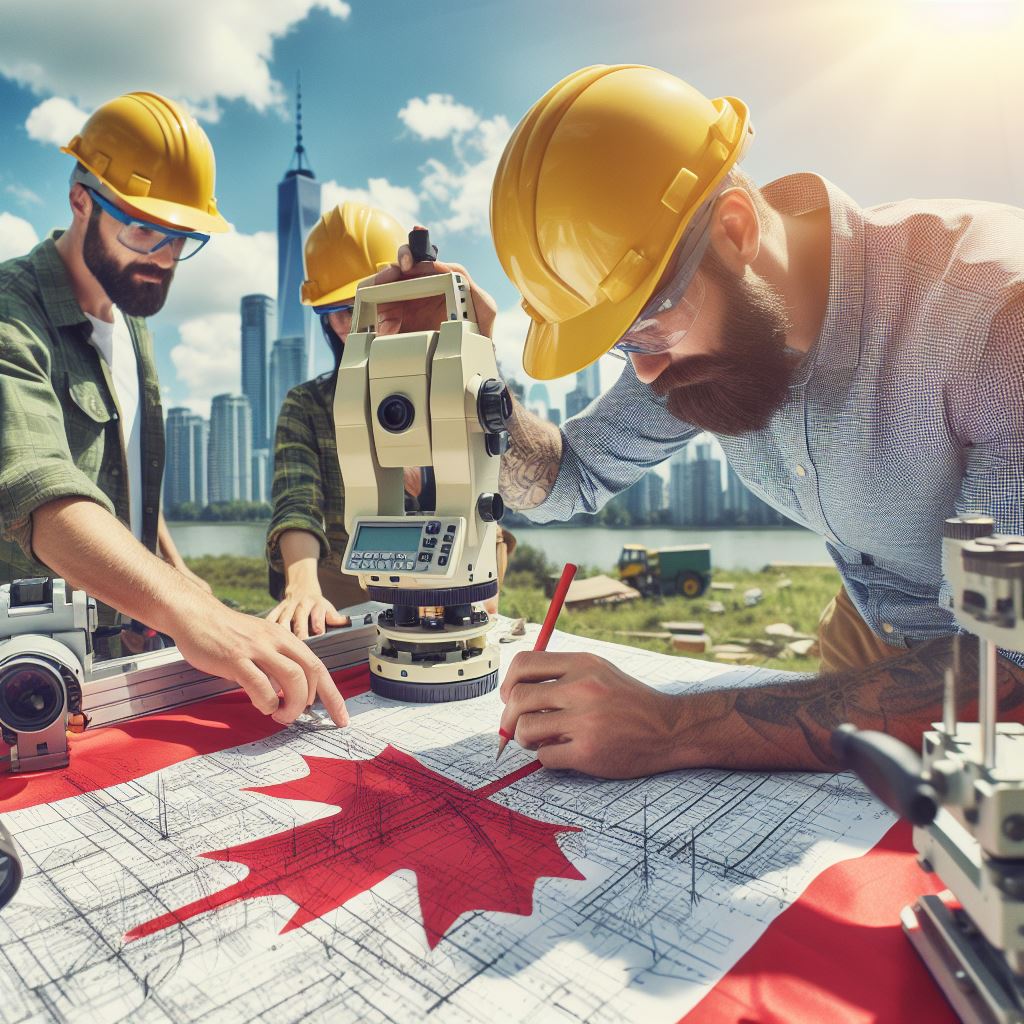Introduction
Canadian surveyors play a crucial role in the development of infrastructure and are vital in various industries.
In 2024, they are expected to face significant challenges that need to be addressed.
Surveyors are essential in ensuring accuracy and precision in land measurements, which are fundamental in construction and development projects.
They provide the necessary data and information for designing and building roads, bridges, buildings, and other infrastructure.
In 2024, Canadian surveyors will encounter several obstacles that could potentially hinder their work and impact the progress of infrastructure development.
These challenges include:
- Technological Advancements: The rapid pace of technological advancements presents both opportunities and challenges for surveyors.
They need to continuously update their skills and embrace new technologies to stay relevant in their field. - Environmental Concerns: With the increasing focus on sustainability and environmental conservation, surveyors need to adapt their practices to mitigate the impact of their work on the environment.
This includes utilizing eco-friendly surveying methods and incorporating green infrastructure in their projects. - Workforce Shortages: The aging surveyor population and fewer new professionals entering the field contribute to a shortage of skilled surveyors.
This shortage can lead to delays in projects and affect the overall quality of surveying services. - Legal and Regulatory Changes: Surveyors must stay updated with changing laws and regulations that govern land surveying.
Failure to do so could result in legal complications and hinder their ability to carry out their work effectively.
In short, Canadian surveyors face significant challenges in 2024 that require proactive measures and adaptation to ensure their continued contribution to infrastructure development.
By embracing technological advancements, addressing environmental concerns, addressing workforce shortages, and staying informed about legal and regulatory changes, they can overcome these challenges and continue to play a crucial role in shaping Canada’s future.
Technological Advancements
The evolution of technology in the surveying industry
The surveying industry has witnessed significant evolution in technology over the years.
From traditional measurement tools to advanced software and equipment, technology has transformed the profession.
The challenges posed by integrating new software, equipment, and methodologies
However, integrating new software, equipment, and methodologies poses challenges for Canadian surveyors.
One challenge is the learning curve associated with adopting and adapting to new technologies.
Surveyors need to invest time and resources in learning how to operate new software and equipment.
Additionally, the compatibility of new technologies with existing systems can cause complications.
Surveyors must ensure seamless integration between various software and equipment for efficient workflow.
The need for continuous professional development to stay updated with technological changes
Moreover, technology is constantly evolving, demanding continuous professional development.
Surveyors need to keep themselves updated with the latest technological advancements.
Continuing education programs and workshops can help professionals stay abreast of technological changes.
Embracing technological advancements can enhance accuracy, efficiency, and productivity in surveying.
Automation enabled by advanced software and equipment reduces human errors and saves time.
Cloud-based platforms allow for real-time collaboration and data sharing among surveyors.
Integration of geospatial data with other systems enables better decision-making and planning.
However, with new technologies come challenges related to data security and privacy.
Surveyors must ensure the protection of sensitive information collected during surveys.
Regular software updates and security measures are necessary to prevent data breaches.
Unlock Your Career Potential
Visualize a clear path to success with our tailored Career Consulting service. Personalized insights in just 1-3 days.
Get StartedAddressing these challenges requires a proactive approach and knowledge of evolving cybersecurity threats.
Moreover, technological advancements can result in a shift in the skillset required by surveyors.
Professionals need to adapt and develop new skills to effectively utilize advanced tools.
Continuous professional development becomes crucial to stay relevant in the industry.
Read: Essential Skills Every Electrical Engineer Needs
Environmental Regulations
As Canadian surveyors move into the year 2024, they face a number of challenges and changes that will shape their profession.
One of the biggest challenges they will encounter is the increasing focus on environmental sustainability and regulations in Canada.
Addressing the Growing Focus on Environmental Sustainability and Regulations
In recent years, there has been a significant shift towards prioritizing environmental sustainability in Canada.
This is reflected in the introduction of new regulations aimed at protecting the environment and ensuring sustainable development.
Surveyors play a crucial role in land development and construction projects, making it essential for them to comply with these new regulations.
They must adapt their practices accordingly to meet the growing demands for environmentally-friendly solutions.
The Importance of Compliance
Complying with environmental regulations is not only a legal requirement but also important for the reputation and credibility of surveyors.
Clients and stakeholders are increasingly looking for professionals who can demonstrate a commitment to sustainability.
Surveyors must stay informed about the latest regulations and ensure that their practices align with the expectations set by the government.
This may involve implementing new technologies and techniques that minimize the environmental impact of their work.
Adapting Practices for Environmental Sustainability
One of the main challenges surveyors face is adapting their practices to meet the requirements of environmental sustainability while still delivering accurate and reliable results.
This involves finding a balance between minimizing environmental impact and fulfilling client expectations.
Surveyors need to invest in training and education to gain expertise in sustainable surveying practices.
This may include learning about eco-friendly materials and techniques, as well as understanding how to minimize disturbance to ecosystems during their work.
Working in Environmentally Sensitive Areas
Challenges of Operating in Protected Areas
Surveyors often encounter challenges when working in environmentally sensitive areas such as wetlands, forests, and protected wildlife habitats.
These areas require special attention and care to ensure minimal disruption to the ecosystem.
Surveyors must obtain the necessary permits and approvals before beginning their work in protected areas.
They may need to collaborate with environmental scientists and professionals to ensure compliance with regulations and minimize the impact on sensitive habitats.
Managing Stakeholder Expectations
Working in environmentally sensitive areas brings the additional challenge of managing stakeholder expectations.
There may be conflicts between the interests of developers and the need to protect the environment.
Surveyors must find ways to engage with stakeholders and communicate the importance of environmental regulations.
They should emphasize the long-term benefits of sustainable practices and work towards finding mutual solutions that satisfy all parties involved.
Implementing Innovative Technologies
With the growing focus on environmental sustainability, surveyors are encouraged to embrace innovative technologies that can help minimize their environmental impact.
This may include using drones for aerial surveys or adopting digital mapping techniques.
These technologies not only enable surveyors to obtain accurate data but also reduce the need for extensive on-site work, thus minimizing disturbance to environmentally sensitive areas.
I fact, in 2024, Canadian surveyors confront the challenges of increasing environmental regulations and the demand for sustainability.
Adapting practices, complying with regulations, and finding sustainable solutions are crucial for their success.
Additionally, working in environmentally sensitive areas requires careful planning, stakeholder management, and the use of innovative technologies to minimize environmental impact.
Read: The History of Land Surveying in Canada Explored
Workforce Shortage
Surveyors play a crucial role in the development and maintenance of infrastructure in Canada.
However, in recent years, there has been a growing concern over the shortage of surveyors in the country.
Current Shortage
The shortage of surveyors in Canada has become a pressing issue for the industry.
The demand for surveying services has been steadily increasing, but there aren’t enough professionals to meet the needs.
This shortage can be attributed to several factors, including the impending retirement of experienced surveyors.
Many surveyors who have been in the field for decades are reaching retirement age, and there aren’t enough young professionals entering the industry to replace them.
Furthermore, there has been a lack of new entrants into the surveying profession.
The industry has struggled to attract and retain young talent, resulting in a significant gap in the workforce.
Additionally, competition from other professions has drawn potential surveyors away.
Engineering and architecture, for example, have proven to be attractive career paths, often luring individuals who may have otherwise pursued surveying.
Potential Consequences
The workforce shortage in surveying can have significant consequences for project timelines and overall quality.
With fewer surveyors available, projects may experience delays and longer completion times.
Surveying is an essential step in the construction process, as accurate measurements and data are necessary for proper planning and design.
Without enough surveyors, project schedules may be disrupted, leading to cost overruns and increased project risks.
Moreover, a shortage of surveyors may compromise the quality of work.
With fewer professionals available, there is a higher likelihood of errors and inaccuracies in surveying, which can have long-term implications for infrastructure development and maintenance.
Inaccurate surveying data can lead to design flaws, construction issues, and even legal disputes.
Without a sufficient number of qualified surveyors, it becomes increasingly challenging to maintain the highest standards of accuracy and precision in the industry.
Addressing the Shortage
In order to mitigate the workforce shortage and its potential consequences, proactive steps need to be taken.
The industry and relevant authorities should invest in attracting and developing new talent.
Efforts should be made to promote surveying as an exciting and fulfilling career option, especially to younger generations.
Scholarships, internships, and mentorship programs can help encourage more individuals to pursue a career in surveying.
Furthermore, initiatives should focus on providing adequate resources and support for surveying education and training programs.
Collaborations between industry professionals and educational institutions can ensure that aspiring surveyors receive the necessary knowledge and skills.
Retaining experienced surveyors should also be a priority.
Creating opportunities for professional growth, offering competitive compensation packages, and fostering a positive work environment can help in retaining experienced surveyors, preventing a mass exodus due to retirement.
In essence, the workforce shortage in surveying is a significant challenge that needs to be addressed urgently in Canada.
By attracting talent, promoting the profession, and providing the necessary support, the industry can overcome this shortage and ensure the timely and high-quality completion of projects.
Read: Electrical Engineering Salaries in Canada: Facts
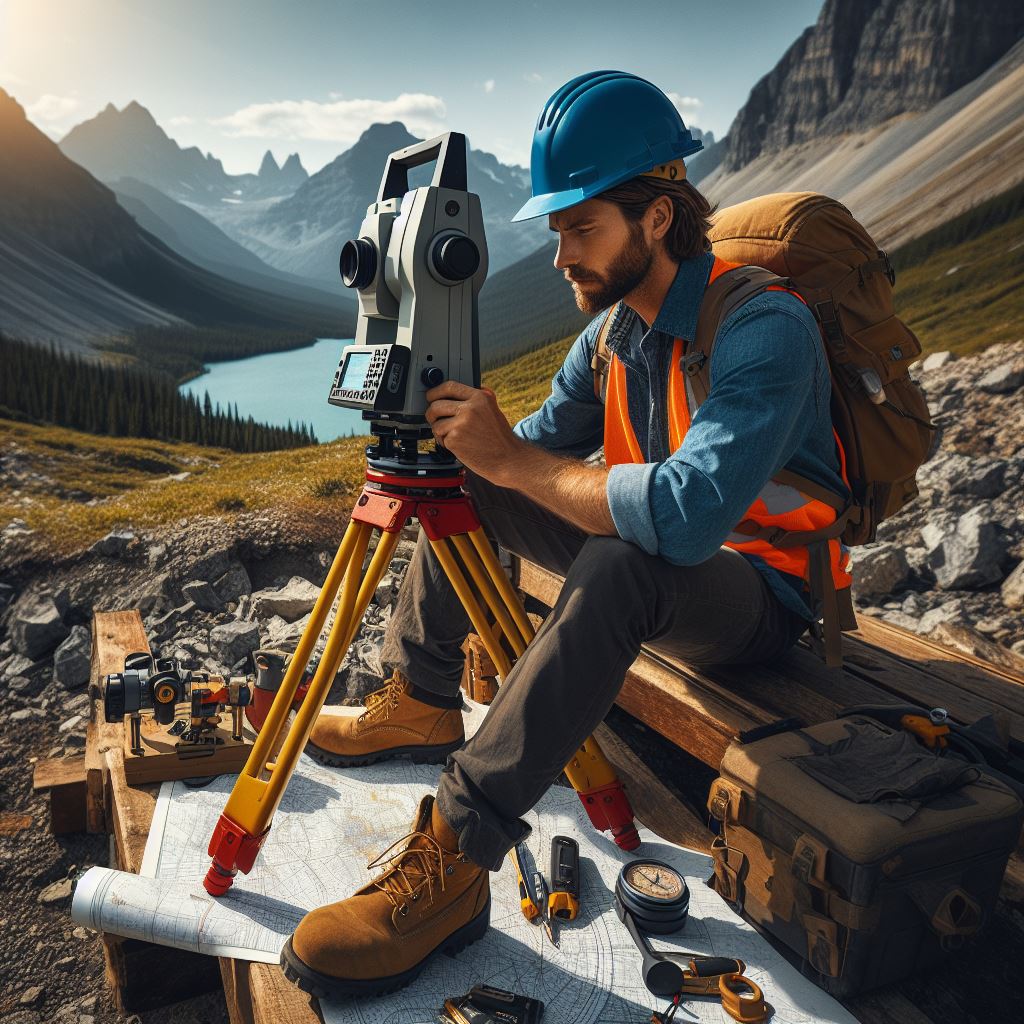
Changing Client Expectations
Client expectations in the field of surveying are constantly evolving, placing greater demands on surveyors to provide faster and more accurate services.
This shift in client expectations poses several challenges for surveyors, who must navigate these changes while maintaining quality standards.
Effective communication and relationship management with clients also play a crucial role in meeting these evolving expectations.
Evolving Client Expectations
- Clients now expect faster turnaround times for surveying services.
- Advancements in technology have increased client demand for more accurate surveying results.
- Clients desire greater access to real-time data and information throughout the surveying process.
- There is a growing need for surveyors to provide more specialized services to meet unique client requirements.
- Clients expect surveyors to stay up-to-date with the latest industry trends and adopt innovative techniques.
Challenges in Meeting Client Expectations
- Increased pressure to deliver results quickly without compromising accuracy or quality.
- Implementing and integrating new technologies to meet the demand for greater accuracy and efficiency.
- Keeping pace with changing regulations and legal requirements in various jurisdictions.
- Adapting to the specialized needs of clients while maintaining a broad range of surveying capabilities.
- Managing client expectations when unforeseen challenges or delays arise during the surveying process.
Importance of Effective Communication and Relationship Management
As client expectations continue to change, establishing and maintaining effective communication and relationships with clients are vital for surveyors.
- Timely and clear communication helps manage client expectations and addresses any concerns or questions they may have.
- Building strong relationships with clients fosters trust and loyalty, leading to repeat business and referrals.
- Regularly updating clients on the progress of their surveying projects ensures transparency and keeps them engaged throughout the process.
- Providing detailed explanations of surveying methods and findings helps clients understand the value and significance of the services provided.
- Seeking client feedback and actively incorporating their suggestions improves service delivery and enhances client satisfaction.
In general, surveyors face significant challenges in meeting the changing client expectations of faster and more accurate surveying services while maintaining quality standards.
This necessitates the adoption of new technologies, staying updated on industry trends, and specializing in niche areas.
Effective communication and relationship management with clients play a critical role in meeting evolving client expectations, as it establishes trust, transparency, and client satisfaction.
Read: Surveying and the Environment: A Canadian Focus
Impact of Climate Change
In recent years, the surveying profession in Canada has been facing several challenges due to climate change.
These challenges are primarily related to changing weather patterns, sea-level rise, and extreme weather events.
Surveyors are required to adapt their methods and technologies to account for the impacts of climate change.
How climate change is affecting the surveying profession
Climate change has had a significant impact on the surveying profession, leading to new challenges that surveyors must overcome in their day-to-day work.
Some of the key challenges include:
- Changing Weather Patterns: Climate change has caused unpredictable weather patterns, resulting in increased frequency and intensity of storms, heatwaves, and other extreme weather events.
Surveyors must adapt to working in these challenging conditions, which can affect the accuracy and safety of their measurements. - Sea-Level Rise: As a result of climate change, sea levels are rising, particularly on the coastlines.
This poses a significant challenge for surveyors working in coastal areas, as they need to accurately determine the boundaries and elevation of properties that may be at risk of flooding or erosion. - Extreme Weather Events: Climate change has led to a higher occurrence of extreme weather events such as hurricanes, heavy rainfall, and wildfires.
Surveyors may face difficulties accessing certain areas affected by these events, delaying surveying projects and posing safety risks.
Challenges Related to Changing Weather Patterns
The changing weather patterns have introduced new challenges for surveyors. These challenges include:
- Increased difficulty in conducting field surveys due to unpredictable weather conditions.
- Higher risk of equipment damage and safety hazards during extreme weather events.
- Limited visibility and reduced accuracy in measurements during foggy or stormy conditions.
Challenges Related to Sea-Level Rise
Sea-level rise has significant implications for surveyors working in coastal areas. Some of the challenges they face include:
- The need to accurately determine coastal property boundaries that may be affected by erosion or submerged due to rising sea levels.
- Increased demand for topographic surveys to assess the potential impact of sea-level rise on infrastructure and development projects.
- The requirement for surveyors to stay updated with the latest elevation data and sea-level rise projections.
Challenges Related to Extreme Weather Events
Extreme weather events pose unique challenges for surveyors. These challenges include:
- Delays in surveying projects due to road closures and limited access to affected areas.
- Increased safety risks for surveyors working in hazardous conditions, such as strong winds or heavy rainfall.
- The need to assess and mitigate potential damage to survey markers and equipment caused by extreme weather conditions.
Adapting Surveying Methods and Technologies
Given the impact of climate change on the surveying profession, there is a pressing need to adapt surveying methods and technologies.
Surveyors must embrace innovative approaches to account for the effects of climate change. Some key strategies include:
- Utilizing advanced remote sensing technologies, such as LiDAR, to accurately capture topographic data and identify areas prone to flooding or erosion.
- Incorporating climate change projections into surveying models and calculations to provide clients with more reliable and future-proof results.
- Collaborating with climate scientists and environmental experts to better understand the anticipated impacts of climate change on the surveying profession.
- Developing guidelines and best practices for surveyors working in extreme weather conditions or areas vulnerable to climate change impacts.
- Investing in training programs and professional development opportunities to equip surveyors with the necessary skills and knowledge to address climate change challenges effectively.
In brief, climate change has introduced several challenges for the surveying profession in Canada.
These challenges include changing weather patterns, sea-level rise, and extreme weather events.
However, by adapting surveying methods and technologies and staying informed about climate change impacts, surveyors can continue to provide accurate and reliable data for various projects while mitigating potential risks.
Regulatory Compliance
The surveying industry in Canada faces numerous challenges in maintaining regulatory compliance.
This blog section will discuss the importance of regulatory compliance, highlight the difficulties surveyors encounter while keeping up with changing regulations, and explore the potential consequences of non-compliance on surveyors and their clients.
The Importance of Regulatory Compliance in the Surveying Industry
- Regulatory compliance is crucial in the surveying industry as it ensures the accuracy and reliability of survey data.
- Complying with regulations helps maintain standardization across surveying practices, allowing for effective comparison and analysis of data.
- Regulatory compliance also fosters trust and credibility in the profession, strengthening the reputation of surveyors among clients and stakeholders.
- By adhering to regulations, surveyors demonstrate their commitment to ethical and professional conduct, promoting public confidence in their work.
Challenges Surveyors Face in Keeping Up with Changing Regulations
- Surveyors encounter a constant challenge of staying updated with evolving regulations implemented by government bodies and industry associations.
- The complexity and diversity of regulatory requirements pose difficulties in understanding and interpreting them accurately.
- Surveyors are required to invest significant time and effort in researching, training, and attending workshops to ensure compliance.
- Adapting to new regulations often involves changes in surveying techniques, equipment, and software, necessitating further investment.
Moreover, the speed at which regulations change adds additional pressure on surveyors to accommodate these changes within tight timeframes.
Potential Consequences of Non-Compliance on Surveyors and Their Clients
- Non-compliance with regulations can result in legal penalties, fines, and potential lawsuits against surveyors.
- Furthermore, non-compliance may lead to the revocation of professional licenses, seriously jeopardizing surveyors’ careers.
- Surveyors who fail to comply with regulations risk damaging their professional reputation, which can lead to loss of business opportunities.
- For their clients, non-compliance may result in inaccurate survey data, leading to costly mistakes and disputes in construction and development projects.
- When surveyors do not comply with regulations, it undermines the credibility of the entire surveying profession and can negatively impact the industry as a whole.
In review, regulatory compliance is of utmost importance in the surveying industry. Adhering to regulations ensures accuracy, standardization, and professionalism.
However, surveyors face challenges in keeping up with evolving regulations, which can have severe consequences on their careers and clients if non-compliance occurs.
By recognizing these challenges and dedicating themselves to continuous learning and adaptation, surveyors can overcome these obstacles and thrive in an ever-changing regulatory landscape.
Conclusion
Canadian surveyors in 2024 will face several challenges in their profession.
These challenges include the rapid advancement of technology, which requires continuous learning and adaptation.
Additionally, changing regulations and standards will demand surveyors to stay updated and collaborate with other professionals.
Furthermore, the increasing complexity of infrastructure development and resource management in Canada will require surveyors’ expertise.
To overcome these challenges, surveyors must prioritize continuous learning, adapt to new technology, and foster collaboration.
By doing so, they can ensure their relevance and effectiveness in the ever-evolving field of surveying.
The surveying profession is vital in infrastructure development and resource management in Canada.
Surveyors play a crucial role in ensuring accurate measurements and mapping, which are essential for planning and decision-making.
Therefore, it is essential to recognize and support the importance of the surveying profession in Canada.
By addressing the challenges faced by Canadian surveyors and emphasizing the need for continuous learning and collaboration, we can ensure their success in 2024 and beyond.

